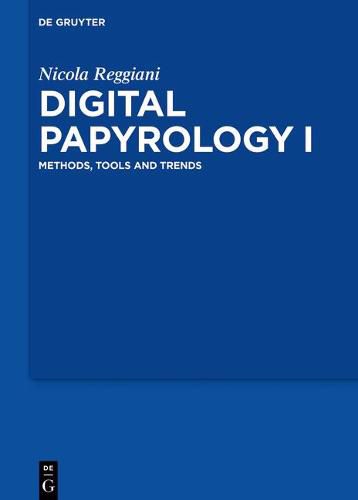Readings Newsletter
Become a Readings Member to make your shopping experience even easier.
Sign in or sign up for free!
You’re not far away from qualifying for FREE standard shipping within Australia
You’ve qualified for FREE standard shipping within Australia
The cart is loading…






Since the very beginnings of the digital humanities, Papyrology has been in the vanguard of the application of information technologies to its own scientific purposes, for both theoretical and practical reasons (the strong awareness towards the problems of human memory and the material ways of preserving it; the need to work with a multifarious and overwhelming amount of different data). After more than thirty years of development, we have now at our disposal the most advanced tools to make papyrological studies more and more effective, and even to create a new conception of papyrology and a new model of edition of the ancient documents. At this turining point, it is important to build an epistemological framework including all the different expressions of Digital Papyrology, to trace a historical sketch setting the background of the contemporary tools, and to provide a clear overview of the current theoretical and technological trends, so that all the possibilities currently available can be exploited following uniform pathways. The volume represents an innovative attempt to deal with such topics, usually relegated into very quick and general treatments within journal articles or papyrological handbooks.
$9.00 standard shipping within Australia
FREE standard shipping within Australia for orders over $100.00
Express & International shipping calculated at checkout
Since the very beginnings of the digital humanities, Papyrology has been in the vanguard of the application of information technologies to its own scientific purposes, for both theoretical and practical reasons (the strong awareness towards the problems of human memory and the material ways of preserving it; the need to work with a multifarious and overwhelming amount of different data). After more than thirty years of development, we have now at our disposal the most advanced tools to make papyrological studies more and more effective, and even to create a new conception of papyrology and a new model of edition of the ancient documents. At this turining point, it is important to build an epistemological framework including all the different expressions of Digital Papyrology, to trace a historical sketch setting the background of the contemporary tools, and to provide a clear overview of the current theoretical and technological trends, so that all the possibilities currently available can be exploited following uniform pathways. The volume represents an innovative attempt to deal with such topics, usually relegated into very quick and general treatments within journal articles or papyrological handbooks.